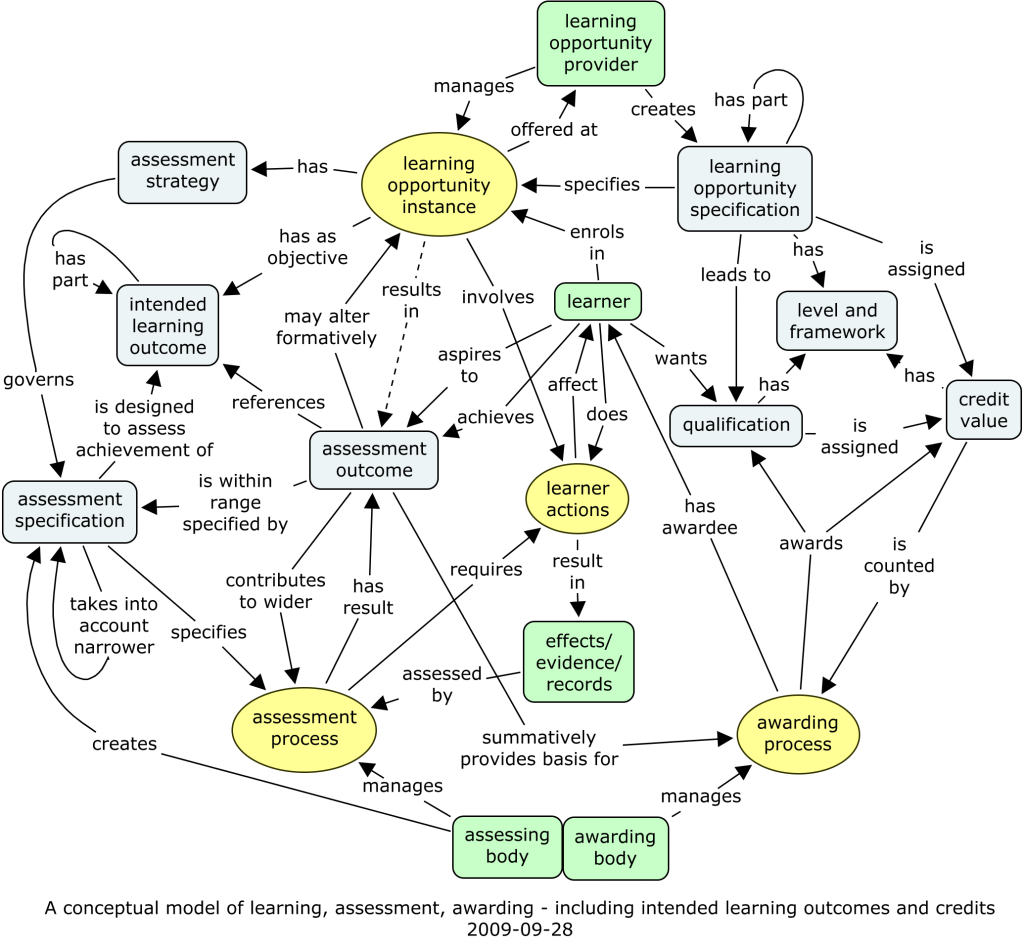As promised, the model is gently evolving from the initial one posted.

Starting from the left, I’ve added a “creates” relationship between the assessing body and the assessment specification, to mirror the one for learning. Then, I’ve reversed the arrows and amended the relationship captions accordingly, for some of the middle part of the diagram. This is to make it easier to read off scenarios from the diagram. Of course, each arrow could be drawn in either direction in principle, just by substituting an inverse relationship, but often one direction makes more sense than the other. I’ve also amended some other captions for clarity.
An obvious scenario to read off would be this: “The learner enrols on a course, which involves doing some activities (like listening, writing, practical work, tests, etc.) These activities result in records (e.g. submitted coursework) which is assessed in a process specified by the assessing body, designed to evaluate the intended learning outcomes that are the objectives of the course. As a result of this summative assessment, the awarding body awards the learner a qualification.” I hope that one sounds plausible.
The right hand side of the diagram hadn’t had much attention recently. To simplify things a little, I decided that level and framework are so tightly joined that there is no need to separate them in this model. Then, mirroring the idea that a learner can aspire to an assessment outcome, it’s natural also to say that a learner may want a qualification. And what happens to credits after they have been awarded? They are normally counted towards a qualification — but this has to be processed, it is not automatic, so I’ve included that in the awarding process.
I’m still reasonably happy with the colour and shape scheme, in which yellow ovals are processes or activities (you can ask, “when did this happen?”), green things are parts of the real world, things that have concrete existence; and blue things are information.
Pingback: Development of a conceptual model 3 | Simon Grant of CETIS
Pingback: Development of a conceptual model | Simon Grant of CETIS